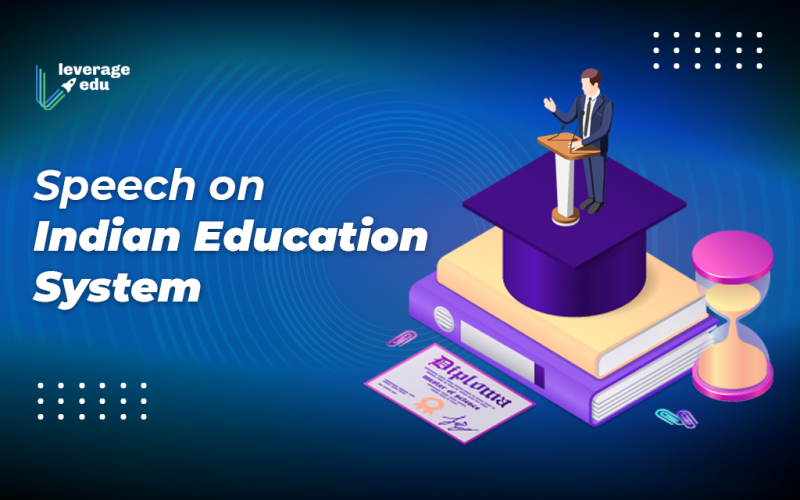ASL stands for Assessment of Speaking and Listening and it is part of the continuous and comprehensive evaluation under CBSE. It is aimed at improving the English speaking and listening skills of students. It is compulsory for students who are in class 9th and 10th. Students are asked to prepare short or long speeches on any given topic and must speak on the topic for the allotted time period. In this blog, we will cover the topic of speech on the Indian education system so you can prepare better and ace your ASL evaluation!
Table of Contents
Speaking Task: Speech on Indian Education System (2- 3 minutes)
Students are generally given the topic on spot with some pointers by the evaluator and the students have one minute to prepare for the topic and must speak continuously for 2 to 3 minutes on the topic.
Good morning everyone. My name is —– and my topic for today’s assessment is the Indian Education System. The Indian education system is one of the oldest, most diverse learning systems in the world. The Indian educational system is designed to ensure a well-developed and uniform curriculum across different states for different grades in the subcontinent. Education is given utmost importance in India with schemes like free and compulsory education for children between the ages of 6 to 14, Beti Bachao, Beti Padhao campaign and Mid-meals in government schools to encourage students to attend school. I thank you for listening and I will conclude this speech by saying that I am aware that the Indian education system is not without its flaws but it is also progressive and rapidly changing.
How to Write a Speech on Discipline?
Speaking Task: Speech on Indian Education System (5 to 10 minutes)
Good morning to all. My name is —- and my topic for the English speaking task is the Indian Education System and I shall try to do justice to this topic. The education system in India comprises of four levels: pre-primary, primary, secondary and senior secondary system; all these levels are well-structured and developed to systemically introduce students to subject matter, develop their language and cognitive skills and prepare them for higher education. The Indian education system gives equal value to knowledge-based learning as well as co-curricular.
Under the system, sports and performing arts are given the utmost significance and all students are encouraged to take part and develop a skill or expertise that will help them in the future. The Indian education system also focuses on practical learning and group activities to provide exposure and teach students the value of teamwork and communication.
There are different types of schools in India: Public, private and public aided private schools, international schools and national schools. Indian parents also have the option of homeschooling their children.
The Indian education system focuses on the overall development of each student by introducing them to the basics of all the subjects from the start till secondary level. Once a student reaches the senior secondary level that is 11th and 12th, the student has the option of choosing between different streams like science, arts and commerce. Senior secondary classes thoroughly prepare students for higher education.
There are some major drawbacks when it comes to the education system in India. The system focuses on rote learning rather than encouraging free thinking, flexibility and interaction, many schools lack basic facilities like computer labs or even proper furniture and the teachers are either underqualified or underpaid which is a huge impediment to growth and learning.
Thank you for listening, I hope this speech was educational and informative.
Check Out – English Speech Topics for Students
We hope with this blog, you are all set to give a speech on Indian Education System. If you are studying for your exams and need quick notes for revision then check out other study blogs on Leverage Edu and subscribe to our newsletter to get regular updates.
-
👍
-
Thank you!
-

 One app for all your study abroad needs
One app for all your study abroad needs






















 45,000+ students realised their study abroad dream with us. Take the first step today.
45,000+ students realised their study abroad dream with us. Take the first step today.


2 comments
👍
Thank you!